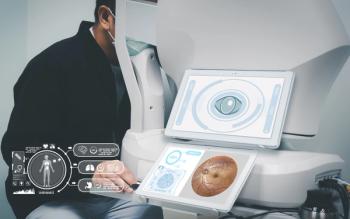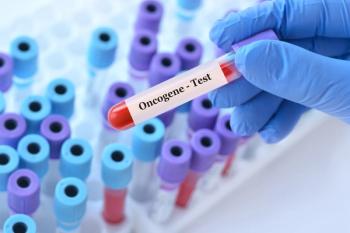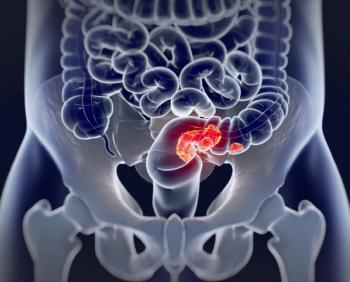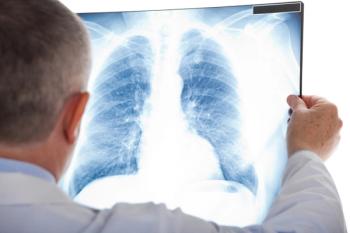
Goals including addressing all of hunger and food insecurity, unmet needs for mental health services, and unstable housing or homelessness in people living with HIV are unlikely to meet their 2025 thresholds.

Goals including addressing all of hunger and food insecurity, unmet needs for mental health services, and unstable housing or homelessness in people living with HIV are unlikely to meet their 2025 thresholds.

This interview accompanies the second podcast in our National Recovery Month series with Mandy Faubel, PhD, LCSW, UPMC Western Behavioral Health at Safe Harbor, and Rebekah Sedlock, DSW, LCSW, UPMC Insurance Services Division with Community Care.

An electronic version of the Symbol-Digit Modalities Test could enable people with multiple sclerosis (MS) to perform frequent remote cognitive assessments independently.

An update to the colonoscopy guidelines released by the American College of Gastroenterology and the American Society for Gastrointestinal Endoscopy could have implications on how colonoscopies are measured in the future.

New research reveals disparities in opioid prescribing by race among Medicare beneficiaries, sparking concerns about potential impacts on rehabilitation outcomes.

During the presidential debate, former President Donald Trump and Vice President Kamala Harris shared their differing visions for the future of the Affordable Care Act (ACA).

Adding bevacizumab to the combination therapy of carboplatin and paclitaxel significantly improved progression-free survival (PFS) in patients with epithelial ovarian cancer (EOC) but not overall survival (OS).

During ESMO Congress 2024, sessions will focus on hot topics in therapeutic areas, such as antibody-drug conjugates; the latest trial data; health policy; and advances in technology.

A new proof-of-concept method reliably engineered a hotspot mutation of SF3B1, a gene-splicing gene, into diverse cancer cell lines, outperforming other contemporary editing approaches.

Social frailty in patients with acute exacerbations of chronic obstructive pulmonary disease (COPD) does not directly impact anxiety or depression but influences these conditions indirectly through social support.

The European approval comes months after the FDA’s approval of the first-of-its-kind treatment for pulmonary arterial hypertension (PAH).

An AI segmentation system was able to identify changes in retinal segmented features based on optical coherence tomography (OCT) images.

Policy changes, such as banning spread pricing and promoting transparency, are necessary to realign the pharmacy benefit manager (PBM) market and ensure that health care resources benefit patients and providers rather than being diverted by middlemen, according to panelists at the Community Oncology Alliance Payer Exchange Summit.

Matthew Smeltzer, PhD, University of Memphis, shares insights into his team's quality-of-care initiative to identify and combat gaps in care for patients with early-stage non–small cell lung cancer (NSCLC).

A new report based on patient focus groups suggests many clinicians can do more to help patients with sickle cell disease (SCD) feel heard and understood.

Speakers at the 2024 World Conference on Lung Cancer discussed the considerations that must go into designing and performing clinical trials in the early-stage lung cancer space, ranging from selecting an end point to empowering participants.

Breakthrough research identifies TIM3 as a key target in MAPK-activated pediatric gliomas, offering new hope for more effective immunotherapy treatments.

The need for improved collaboration between payers and providers is key to successfully implementing value-based care initiatives that address patient needs, ensure measurable outcomes, and overcome challenges, according to panelists at the Community Oncology Alliance Payer Exchange Summit.

The findings may help inform policy changes at the federal level aiming to address unfair and deceptive pharmacy benefit manager (PBM) practices.

Mammography facilities are now nationally required to inform patients about their breast density, which can affect cancer detection.

Drug use, participation in exchange sex, and depressive symptoms were all found to be associated with bacterial sexually transmitted infections (STIs) in sexual minority men living with HIV.

Biomarker testing is critical for determining optimal therapy early in the non–small lung cancer (NSCLC) treatment process, but research shows uneven insurance coverage of these tests and inconsistent uptake in cancer centers.

Luca Richeldi, MD, PhD, outlined crucial lessons from recent idiopathic pulmonary fibrosis (IPF) trial failures, advocating for adaptive trial designs, rigorous statistical methods, and a focus on patient-relevant outcomes to enhance future research.

Lung cancer is tied to tobacco smoking in the public consciousness, but a significant proportion of cases are driven by factors like indoor and outdoor air pollution or ancestral genetic variants.

Ali Khawar, Employee Benefits Security Administration, US Department of Labor, believes the final rule will be a benefit to employers and health plans that are trying to do the right thing and offer robust mental health benefits or substance use benefits.

Patients who received radiotherapy without a recurrence of rectal cancer had significantly lower quality of life compared with patients who did not receive radiotherapy.

A panel discussion at the Community Oncology Alliance (COA) Payer Exchange Summit highlighted the tension between state regulation of pharmacy benefit managers (PBMs) and the Employee Retirement Income Security Act (ERISA) preemption, emphasizing the need for reforms to balance employer uniformity with addressing PBM practices.

John Heymach, MD, PhD, The University of Texas MD Anderson Cancer Center, discusses exciting developments in HER2-targeted therapies that he foresees making a difference in the treatment of non–small cell lung cancer (NSCLC).

This third and final installment on forever chemicals highlights the present-day initiatives and developments aimed at eliminating forever chemicals, their pervasiveness, and improving public health.

Sulthiame demonstrated significant reductions in respiratory pauses and improvements in oxygen levels during sleep, offering hope for patients with obstructive sleep apnea who cannot use continuous positive airway pressure machines.

259 Prospect Plains Rd, Bldg H
Cranbury, NJ 08512
© 2025 MJH Life Sciences®
All rights reserved.
